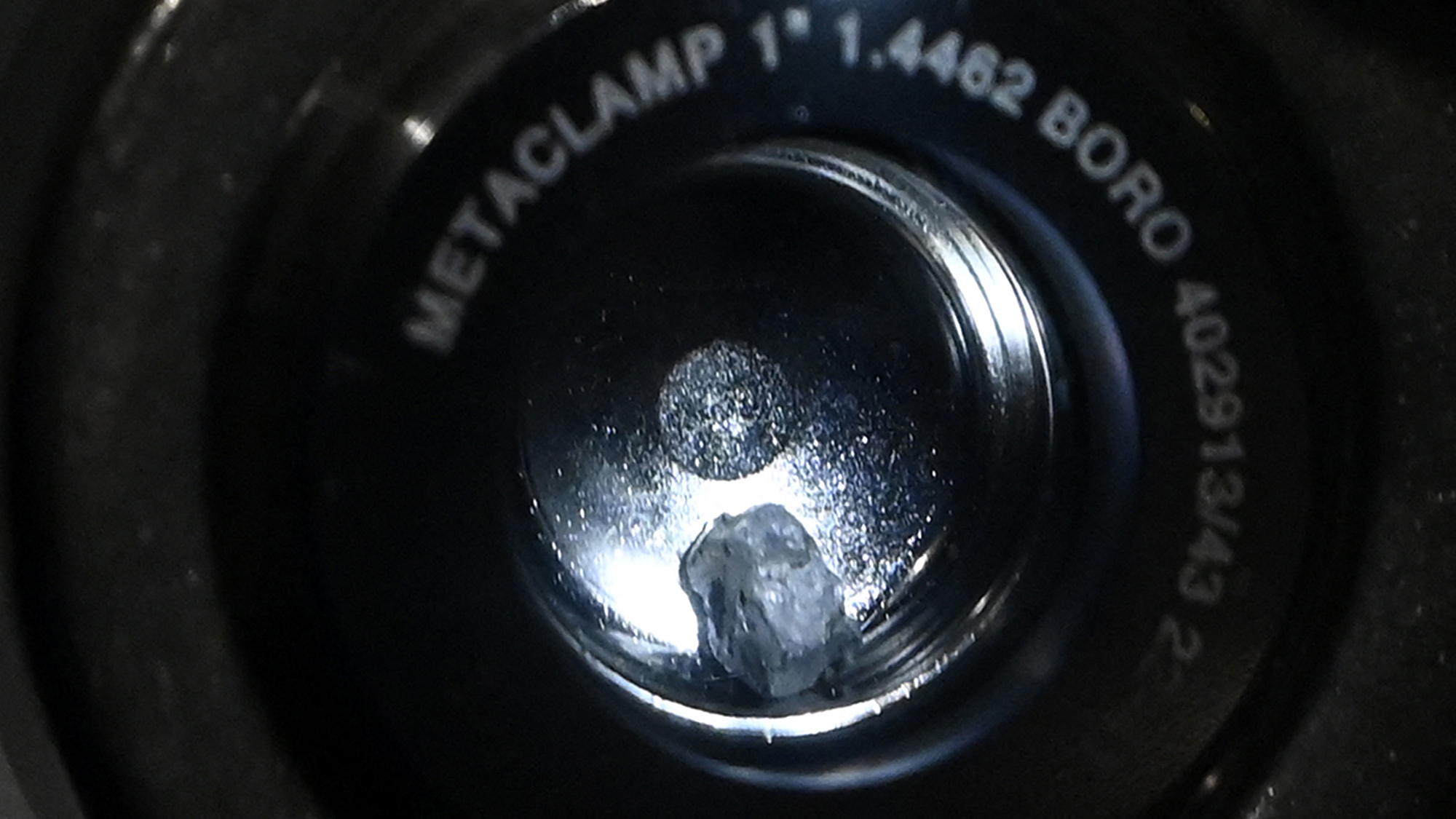

On November 3, the Smithsonian’s National Museum of Natural History debuted a piece of the asteroid Bennu to the public for the first time. The sample was deposited on Earth by NASA’s OSIRIS-REx spacecraft on September 24. The spacecraft did not land, but instead dropped a capsule containing about nine ounces of asteroid samples down to Earth. The spacecraft continued on to a new mission called OSIRIS-APEX. It is set to explore the asteroid Apophis when it comes within 20,000 miles of Earth in 2029.
On display is a 0.3-inch in diameter stone that weighs only 0.005-ounces. The stone was retrieved amidst rocks and dust collected by the spacecraft in 2020 after two years of exploring Bennu.
[Related: NASA’s first asteroid-return sample is a goldmine of life-sustaining materials.]
OSIRIS-REx stands for Origins, Spectral Interpretation, Resource Identification, and Security-Regolith Explorer and is the first US mission to collect samples from an asteroid. The spacecraft traveled 1.4-billion-miles from Earth, to the asteroid Bennu, and then back again. Bennu is roughly 4.5 billion years old and dates back to the crucial first 10 million years of the solar system’s development. Its age offers scientists a window into what this time period looked like. The space rock is shaped like a spinning top and is about one-third of a mile across at its widest part–slightly wider than the Empire State Building is tall. It revolves around the sun between the orbits of Earth and Mars.
“The OSIRIS-REx mission is an incredible scientific achievement that promises to shed light on what makes our planet unique,” Kirk Johnson, the Sant Director of the National Museum of Natural History, said in a statement. “With the help of our partners at NASA, we are proud to put one of these momentous samples on display to the public for the first time.”
The sample was labeled OREX-800027-0 by NASA scientists at Houston’s Johnson Space Center and is being stored in a nitrogen environment to keep it safe from contamination. CT scans of the displayed stone revealed that it is composed of dozens of smaller rocks. The fragments were fused back together at some point and the entire stone was changed by the presence of water. The alterations to the stone produced clays, iron oxides, iron sulfides, and carbonates as its major minerals and even carbon.

The samples from this mission hold chemical clues to our solar system’s formation. Evidence of essential elements like carbon in the rocks outside of the main sample container have already been uncovered by NASA scientists. These early samples also contain some water-rich minerals. Scientists believe that similar water-containing asteroids bombarded Earth billions of years ago, which provided the water that eventually formed our planet’s first oceans.
[Related: NASA’s OSIRIS mission delivered asteroid samples to Earth.]
“Having now returned to Earth without being exposed to our water-rich atmosphere or the life that fills every corner of our planet, the samples of Bennu hold the promise to tell us about the water and organics before life came to form our unique planet,” museum meteorite curator Tim McCoy said in a statement. McCoy has worked on the OSIRIS-REx mission for nearly two decades as part of an international team of scientists.
According to Space.com, a sizable crowd turned out to see the space rock and NASA Administrator Bill Nelson and other space agency and Smithsonian officials were present at the unveiling ceremony. Additional Bennu samples will be on display at a later date and at the Alfie Norville Gem & Mineral Museum at the University of Arizona in Tucson and Space Center Houston, next to to NASA’s Johnson Space Center.
